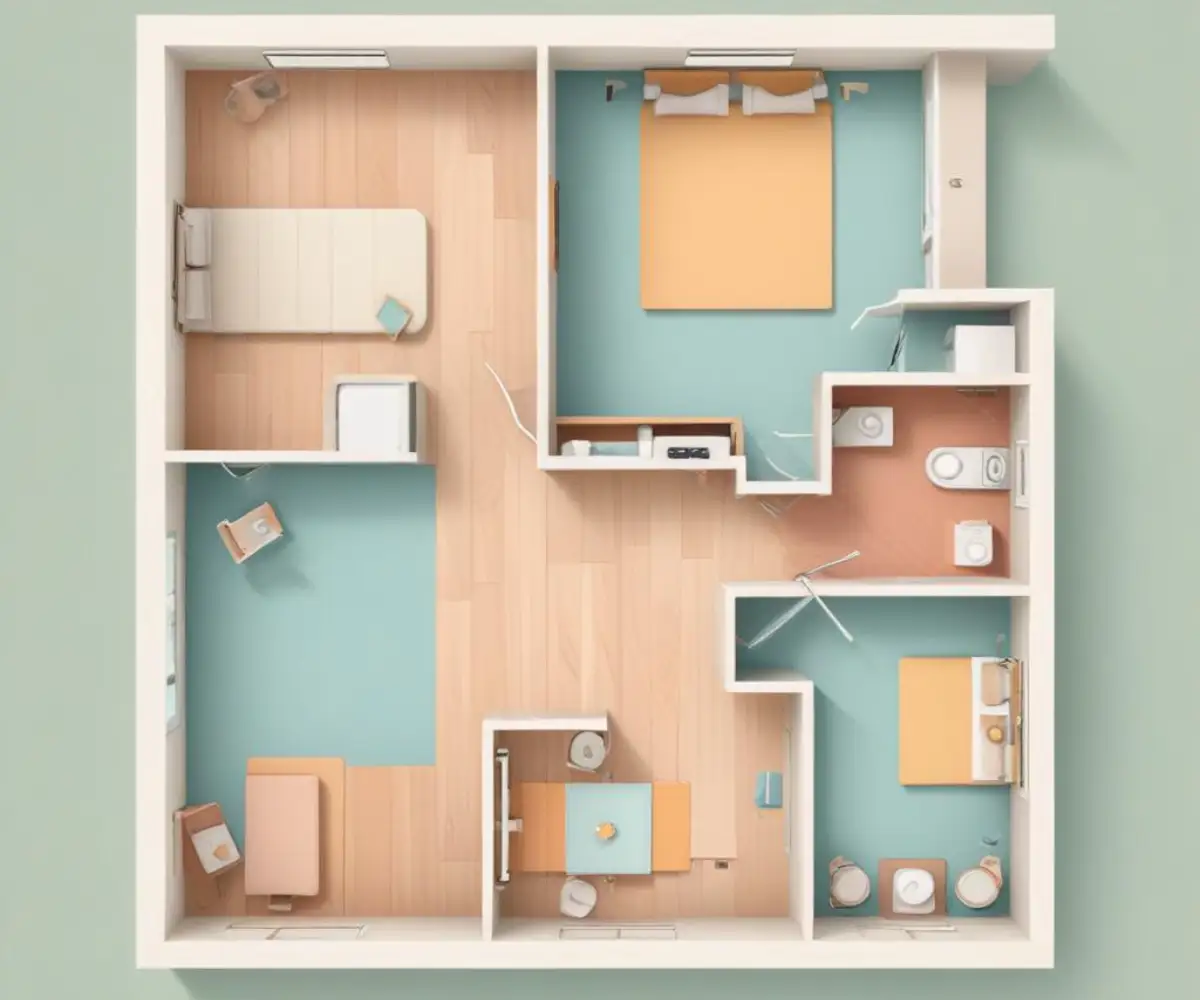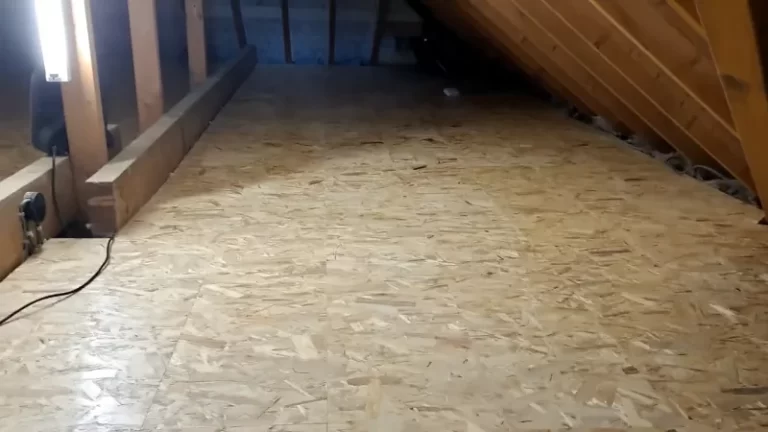Flooring Layout Software: Stop Wasting Money & Time Now!
The dream of a new floor can quickly turn into a nightmare. You’ve found the perfect material, but the project stalls over critical questions: How much do you actually need? Where should the first plank be laid? How will the pattern look in your uniquely shaped room?
This uncertainty leads to the two most dreaded outcomes in any home improvement project: wasted materials and a finished product that looks unprofessional. Manual calculations, especially for complex patterns or rooms with multiple angles, are notoriously prone to error. This is where modern technology offers a definitive solution.
You'll Learn About
Why Your Manual Floor Plan is Costing You More Than You Think
Relying on a tape measure and a notepad for flooring projects is an outdated practice that carries significant hidden costs. The “measure twice, cut once” mantra is wise, but it doesn’t account for the complex variables of a full-room layout.
The Hidden Costs of “Eyeballing It”
The most immediate cost of poor planning is material waste. Ordering 10-15% extra for waste is standard, but miscalculations can easily push that number to 25% or higher, eating into your budget. Every wrong cut is money thrown away.
Beyond materials, your time is valuable. Hours spent re-measuring, re-calculating, and correcting mistakes are hours lost. A poorly planned layout can also result in an aesthetically displeasing finish, with awkward patterns and unbalanced lines that diminish your home’s value.
The Measurement Nightmare: From Crooked Rooms to Complex Angles
Few rooms are perfect squares. Walls can be slightly bowed, corners may not be 90 degrees, and obstacles like kitchen islands, fireplaces, and built-in cabinets create layout challenges. Planning a layout around these features manually is a geometric puzzle.
Failing to account for these irregularities from the start can cause patterns to drift and result in tiny, awkward sliver-cuts against a wall. These small details are the difference between a DIY job and a professional installation.
The Ultimate Solution: Harnessing Flooring Layout Software
Flooring layout software eliminates the guesswork entirely. By allowing you to create a precise digital model of your room, these tools empower you to plan every detail with absolute certainty before you ever make a single cut.
Think of it as a digital twin for your floor. You can experiment, make mistakes, and perfect your plan in a virtual environment, ensuring the real-world execution is flawless, efficient, and cost-effective.
Key Features That Transform Your Project
Modern flooring software is packed with powerful features designed to simplify every stage of the planning process. Accurate 2D and 3D visualization allows you to see exactly how your chosen flooring and pattern will look from any angle, removing any doubt about your design choices.
These programs handle all the math for you. Simply input your room’s dimensions, and the software provides automatic measurements and material calculations. This ensures you buy the right amount of flooring, saving you money and preventing last-minute trips to the store.
Perhaps the most powerful feature is pattern simulation. You can instantly switch between herringbone, chevron, staggered brick, or simple straight-lay patterns to see what best suits your space. Many tools also feature extensive material libraries, allowing you to apply realistic textures for wood, tile, laminate, and vinyl to your digital plan. The best software even includes waste optimization algorithms that generate a cutting plan to maximize the use of every single plank or tile.

Choosing the Right Software: A Comparative Guide
The market for flooring layout software ranges from simple, free online tools to sophisticated professional-grade programs. The best choice depends entirely on the scope of your project and your technical comfort level.
For a straightforward, single-room project, a free web-based tool is often sufficient. For large-scale renovations or professional use, investing in a paid program with advanced features can save thousands of dollars in the long run.
| Software | Ideal User | Key Features | Price Model |
|---|---|---|---|
| Floorplanner | DIY Enthusiast | Easy drag-and-drop interface, large furniture library, 2D/3D views. | Freemium |
| RoomSketcher | Home Renovator | High-quality 3D visuals, floor plans with measurements, brand-name products. | Subscription |
| SketchUp | Professional/Advanced DIY | Powerful 3D modeling, highly customizable, extensive extension library. | Freemium |
| HomeStyler | Interior Design Hobbyist | Realistic rendering, large library of real-world products, easy to use. | Free |
For the DIY Enthusiast: Free and User-Friendly Options
If you’re planning to update a single bedroom or living room, you don’t need an overly complex program. Tools like Floorplanner or HomeStyler offer intuitive interfaces that let you quickly draw your room, add flooring, and visualize the result.
Their focus is on simplicity and ease of use, making them perfect for getting a quick, accurate preview of your design ideas without a steep learning curve.
For the Ambitious Renovator & Professional: Advanced Tools
For those tackling a whole-home renovation or for contractors, more robust software is a worthy investment. These advanced tools offer features like detailed cut-list generation, budget tracking, and the ability to export professional-grade blueprints.
They provide a level of precision that is essential for complex and costly projects. Even when dealing with specific ecosystems, such as a major kitchen overhaul using IKEA components, digital planning is crucial. While a specialized tool can be helpful, knowing how to master the SEKTION planner’s quirks is its own separate skill set within the broader world of digital design.
Pro-Level Strategy: Beyond Basic Layouts
Truly professional results are found in the details that most people overlook. Using flooring layout software unlocks the ability to plan these advanced elements with ease, elevating your project from good to exceptional.
The Secret to Perfect Transitions
One of the biggest giveaways of a DIY job is a clumsy transition between two different types of flooring. Use your software to meticulously plan the meeting point between the tile in your kitchen and the hardwood in your living room. You can model the exact placement of transition strips like T-moldings or reducers.
Crucially, you can also input the thickness of your different flooring materials and their underlayment. This allows you to anticipate and solve for any height discrepancies before they become a tripping hazard, ensuring a smooth and seamless flow throughout your home.
Mastering Complex Patterns Without the Headache
Intricate patterns like herringbone or chevron can intimidate even experienced installers. The key is establishing a perfectly straight and centered starting line. Your software can calculate the exact center of the room and show you how to start your pattern from there, ensuring it remains balanced and symmetrical as it expands to the walls.
This digital foresight prevents the common issue of a pattern looking skewed or resulting in tiny, difficult cuts at the edges. It allows you to see how the direction of the pattern will influence the room’s perceived dimensions, giving you full design control.
Accounting for the Unseen: Subfloor and Underlayment Planning
A flawless floor is only as good as the foundation beneath it. Advanced planning involves more than just the visible surface. Use the notes or layers feature in your software to mark the locations of subfloor issues, such as high or low spots that need to be leveled.
You can also factor in the thickness of your chosen underlayment. This detail is critical for ensuring that doors will open and close without scraping against the new floor and that appliances will still fit correctly under countertops.
Step-by-Step: Your First Project with Flooring Layout Software
Getting started is simpler than you might think. Follow these basic steps to take control of your next flooring project and guarantee a successful outcome.
Step 1: Accurate Room Measurement. This is the most critical step. Measure every wall, doorway, and permanent fixture in your room. Follow the old rule: measure twice, so you only have to input the data once.
Step 2: Recreate Your Space Digitally. Open your chosen software and use the drawing tools to create the outline of your room based on your measurements. Add in the locations of doors, windows, and any large furniture or fixtures that will remain in place.
Step 3: Select Your Flooring & Pattern. This is the creative part. Browse the material library and apply different flooring options to your digital room. Experiment with various patterns and orientations until you find the perfect look.
Step 4: Generate Your Material List & Cut Sheet. Once you’ve finalized your design, the software will generate a precise list of how much flooring you need to purchase. Many will also create a printable cut list or layout guide, showing you exactly how to execute the plan. After the old flooring is removed, you’ll need a disposal plan, and understanding the etiquette of services like whether to tip for junk removal can help you budget for the entire project scope.
Conclusion: Plan Smarter, Not Harder
Moving from a manual planning process to a digital one is the single best step you can take to ensure your flooring project is a success. It eliminates guesswork, prevents costly material waste, and gives you the confidence to execute your vision flawlessly. A well-planned project feels less like a chore and more like a creative endeavor.
Embrace the technology available and take control of your home renovation. Good planning is a universal principle, applying to all aspects of home improvement, whether it’s a new floor or a seemingly small task like learning how to reverse a door swing to improve a room’s flow.

